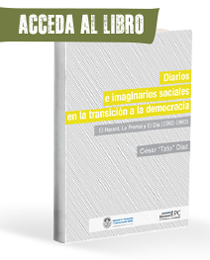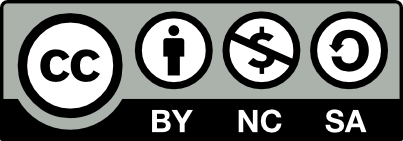Chauvinism and Xenophobia in the Magazine en marcha of Chetumal, Quintana Roo, Mexico, between 1942 and 1943
DOI:
https://doi.org/10.24215/24690457e022Keywords:
en marcha, chauvinism, xenophobia, MexicoAbstract
Second World War coincided in Mexico with the start of the process of consolidation of the system product of the Mexican Revolution, when the nation project passed to a sui generis dependent capitalism, under the aegis of a single-party system with an inflammatory nationalistic speech and a practice of subjection to USA policy. Centralizer of decisions in the furthest areas, this system cast hand of chauvinism and xenophobia, and the content of the biweekly en marcha is a sample of such expressions in the field of the daily life of Quintana Roo, in the Mexican Southeast and Caribbean.Downloads
References
ADLER-LOMNITZ, L.; RODRIGO SALAZAR, E.; ADLER, I. (2004). Simbolismo y ritual en la política mexicana. Ciudad de México, México: Siglo XXI. AGUILAR CAMÍN, H. (1983). Las constantes históricas del Estado mexicano. Historias, (3), 39-52.
AGUILAR CAMÍN, H. y MEYER, L. (1989). A la sombra de la revolución mexicana. Ciudad de México, México: Cal y Arena.
ALONSO ALCOCER, P. (1992). Cuando Quintana Roo fue desmembrado. Chetumal, México: Gobierno del Estado de Quintana Roo.
CAREAGA VILIESID, L. (1990). Quintana Roo. Una historia compartida. Chetumal, México: Instituto Mora.
CASTAÑEDA, Jorge. (1999). La herencia. Arqueología de la sucesión presidencial en México. Ciudad de México, México: Alfaguara.
CONZEVIK, A. y VÉLEZ PAZ, G. (2010). Himno Nacional Mexicano. Su historia. Ciudad de México, México: Cámara de Diputados, LXI Legislatura/Miguel Ángel Porrúa. Recuperado de http://biblioteca.diputados.gob.mx/janium/bv/bicen/him_nac.pdf
CÓRDOVA, Arnaldo. (1993). La formación del poder político en México. Ciudad de México, México: ERA.
DACHARY, A. C. y ARNAIZ BURNE, S. M. (1998). El caribe mexicano, una frontera olvidada. Chetumal, México: Universidad de Quintana Roo.
ESPÍNDOLA MATA, J. (2004). El hombre que lo podía todo, todo, todo. Ensayo sobre el mito presidencial en México. Ciudad de México, México: COLMEX.
GARCÍA DE LOS ARCOS, M. F.; QUIROZ ÁVILA, T.; RAMÍREZ LEYVA, E.; RIVERA CASTRO, J.; SUÁREZ ESCOBAR, M.; URIBE, Á. E. (2015). La fuente hemerográfica en la diacronía: variedad de enfoques. Ciudad de México, México: UAM-A.
GARRIDO, L. J. (1982). El partido de la revolución institucionalizada. La formación del nuevo Estado en México (1928-1945). Ciudad de México, México: Siglo XXI.
GÓMEZ NAVARRETE, J. A. (1998). Historia y geografía de Quintana Roo. Chetumal, México: Gobierno del Estado de Quintana Roo.
GONZÁLEZ, L. (1980). El match Cárdenas-Calles o la afirmación del presidencialismo mexicano. Relaciones, 1(1), 5-33.
HERNÁNDEZ CHÁVEZ, A. (coord.) (1994). Presidencialismo y sistema político. México y Estados Unidos. Ciudad de México, México: Fondo de Cultura Económica / El Colegio de México (COLMEX).
INEGI (Instituto Nacional de Estadística y Geografía) (1940). Censo Nacional de Población 1940. Recuperado de http://biblioteca.itam.mx/recursos/ehm.html
LOAEZA, S. (2012a). Las elecciones ya no son lo que eran. Nexos, (402). Recuperado de http://www.nexos.com.mx/?p=14843
LOAEZA, S. (2012b) (selección y traducción). Tres visiones de la elección de 1940. Nexos, (402). Recuperado de http://www.nexos.com.mx/?p=14844
LÓPEZ PORTILLO, F. (1995). Estado e ideología empresarial en el gobierno alemanista. México D. F., México: Universidad Nacional Autónoma de México.
LOYOLA, R. (coord.) (1986). Entre la guerra y la estabilidad política. El México de los 40. Ciudad de México, México: CONACULTA / Grijalbo.
MARVÁN LABORDE, I. (1997). ¿Y después del presidencialismo? Reflexiones para la formación de un nuevo régimen. Ciudad de México, México: Océano.
MEDIN, T. (1990). El sexenio alemanista. Ciudad de México, México: ERA.
MEDINA, L. (1979). Historia de la Revolución Mexicana. México en la Segunda Guerra Mundial. Período 1940-1952. Civilismo y modernización del autoritarismo. Ciudad de México, México: El Colegio de México (COLMEX).
MICHAELS, A. L. (1971). Las elecciones de 1940. Historia Mexicana, 21(1), 80-134. Recuperado de https://www.jstor.org/stable/25134898?seq=1#page_scan_tab_contents
MONSIVÁIS, C. (1981). Notas sobre el Estado, la cultura nacional y las culturas populares en México. Cuadernos Políticos, (30), 33-43.
SALAZAR, D. y FLORES, E. (1998). Soldados mexicanos en el frente. México y la Segunda Guerra Mundial. Historias, (40), 83-101. Recuperado de http://www.estudioshistoricos.inah.gob.mx/revistaHistorias/wp-content/uploads/historias_40_83-102.pdf
SECRETARIA DE LA ECONOMÍA NACIONAL (1943). Estados Unidos Mexicanos. 6° Censo de Población 1940. Resumen General. Recuperado de http://www3.inegi.org.mx/contenidos/proyectos/ccpv/1940/1940_p.pdf
SEMAR (1986). Gestas históricas de la Armada de México. Ciudad de México, México: edición del autor.
SHERIDAN ALLEN, W. (1984). The Nazi Seizure of Power: the Experience of a Single German Town, 1922-1945. Nueva York, Estados Unidos: Francklin Watts Inc.
TORRES, B. (1979). Historia de la Revolución Mexicana. México en la Segunda Guerra Mundial, 1940-1952. Ciudad de México, México: El Colegio de México (COLMEX).
UNIKEL, L. (1976). El desarrollo urbano de México. Diagnóstico e implicaciones futuras. Ciudad de México, México: El Colegio de México (COLMEX).
URQUIZO, F. L. (2005). Tres de diana. Ciudad de México, México: Gobierno del Estado de Coahuila.
VALADÉS, J. C. (1985). Historia general de la Revolución Mexicana. La unidad nacional. Ciudad de México, México: SEP.
Published
How to Cite
Issue
Section
License
The acceptance of an original by the journal implies the non-exclusive transfer of the patrimonial rights of the authors in favor of the publisher, who allows the reuse, after its edition (postprint), under a Creative Commons License Attribution-NonCommercial-ShareAlike 4.0 International.
According to these terms, the material can be shared (copy and redistribute in any medium or format) and adapted (remix, transform and create another work from the material), provided that a) the authorship and the original source of their publication (magazine and URL of the work) are cited, b) is not used for commercial purposes and c) the same terms of the license are maintained.
The assignment of non-exclusive rights implies that after postprint in IMPRONTAS de la historia y la comunicación authors may publish their work in any language, media and format; in that case, it is requested that they signal that the material was originally published by this journal.
Assignment also entails the authors’ authorization for the work to be collected by SEDICI, the institutional repository of the Universidad Nacional de La Plata, and for it to be indexed in the databases that the publisher thinks appropriate for enhancing the visibility of the published work and its authors.
In addition, the journal encourages authors to submit their works to other institutional and thematic repositories after their publication in IMPRONTAS de la historia y la comunicación, under the assumption that offering society unrestricted access to scientific and academic production contributes to a greater exchange in global knowledge.






.jpg)


.png)


.png)


















